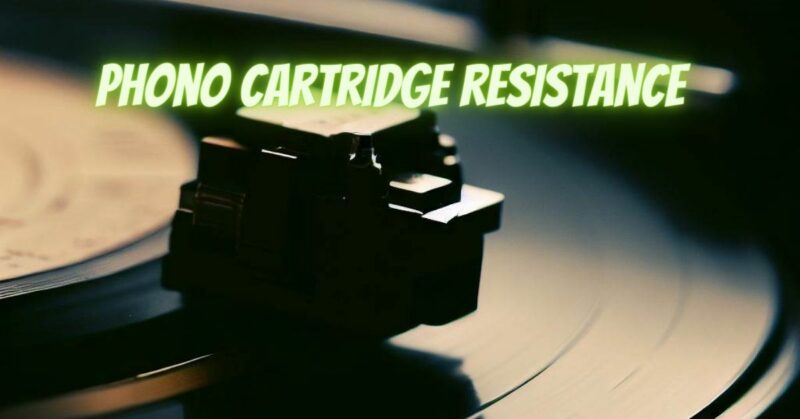Vinyl records have made a remarkable resurgence in the digital age, captivating audiophiles with their warm and authentic sound. Behind the scenes of vinyl playback lies the intricate world of phono cartridges, each with its own set of specifications that influence the sonic experience. One crucial specification is the phono cartridge’s resistance. In this article, we’ll delve into the concept of phono cartridge resistance and its significance in shaping your vinyl listening journey.
The Basics of Phono Cartridge Resistance:
Phono cartridge resistance, often referred to as internal impedance or DC resistance, is a measure of the electrical resistance within the cartridge’s coils. It plays a pivotal role in the interaction between the cartridge and the phono preamplifier (phono stage) in your audio system.
Low vs. High Resistance:
Phono cartridges typically have either low or high resistance, and the choice between the two can affect the overall performance of your vinyl playback system.
- Low Resistance Cartridges: Cartridges with low resistance values (usually measured in ohms) offer higher current output. They are well-suited for use with moving coil (MC) cartridges, which inherently have lower outputs. Low resistance cartridges provide greater compatibility with a wider range of phono preamplifiers, ensuring that the signal from the cartridge is efficiently amplified.
- High Resistance Cartridges: High resistance cartridges have higher internal impedance. These cartridges often work well with moving magnet (MM) cartridges, which typically have higher output levels. However, using a high resistance cartridge with an MM phono stage might lead to an uneven frequency response and loss of detail.
Matching Cartridge Resistance and Phono Stage:
Achieving the ideal match between the resistance of your phono cartridge and the input impedance of your phono preamplifier is crucial for optimal performance.
- Loading Effects: The interaction between the cartridge and the preamplifier affects the frequency response and overall sound quality. Mismatches in resistance can lead to changes in tonal balance and dynamics.
- Cartridge Loading: Many phono preamplifiers offer adjustable cartridge loading options, allowing you to fine-tune the interaction between the cartridge and the preamp. This adjustment helps optimize the cartridge’s performance.
Considerations for Audiophiles:
- Cartridge and Preamplifier Compatibility: When selecting a phono cartridge, consider its resistance specifications and match it with a compatible phono preamplifier. Check the preamp’s input impedance to ensure a proper match.
- Upgrade Paths: As you venture into the world of high-end audio, the significance of cartridge resistance becomes more pronounced. When upgrading your cartridge or phono stage, ensure that they are compatible to fully realize the benefits of your investment.
- Listening Tests: Don’t solely rely on technical specifications. Trust your ears and conduct listening tests to determine the best combination of cartridge and phono stage for your preferences.
Phono cartridge resistance is a critical element that influences the synergy between your cartridge and phono preamplifier. By understanding the implications of low and high resistance cartridges and their compatibility with various phono stages, you can tailor your vinyl playback experience to suit your preferences. Whether you’re seeking a warm, immersive sound or a detailed, analytical presentation, optimizing cartridge resistance ensures that the heart of your vinyl setup delivers its full sonic potential.

